
"Magic Scrolls"
The written word is powerful, and that power brings respect, as well as suspicion and fear, to the scribe. Most scribes, by dint of their training, are dabtaras, a word which indicates both graduates of the higher levels of religious training and magicians. The power to read and write gives access to works of divination, secret names of power, and the ability to affect demons and spirits through the production of scrolls and amulets, both for good and for ill. Because of the potential for harm associated with writing, there have been highly-respected scholars in Ethiopia who never learned to read or write; by learning to write they could be associated with magic or accused of making scrolls or performing black magic, but by avoiding it, they avoid such potential for accusation. Since the traditional educational system is strongly based in memorization, illiteracy may prove not to be a particularly significant hindrance for the scholar.
Scrolls as Medicine
Ethiopian Literate "Magical," Magico-Religious, and Magico-Liturgical Practices;

The Dabtara
Dabtaras are liturgical specialists in the Ethiopian Church, clerics who have gone beyond the memorization of the Psalms to take courses in poetry, liturgy, and writing. The power to write in Ethiopia includes the power to write prayers and spells, and so the word dabtara has a second meaning, "magician." Few liturgical specialists are magicians, and not all magicians are liturgical specialists, but there is an overlap, and a common title. The work of the magician is not only written, but it also includes herb-lore and divination.
Herbal Magic
Magicians are often herb-wise, and know the medicinal and mystical properties of local plants, out of which they can craft both remedies and protective charms. These magicians often serve in the capacity of healers, and may use a mix of written and herbal charms. In the image to the right, the boy has a small pouch of herbs on his necklace.

Amuletic Magic
Following an ancient practice, the wearing of a written amulet may ward off evil. In some cases this is in the form of a scroll, as pictured above, but small accordion-fold books are also produced and sewn into leather cases, to be worn around the neck. Amulets and scrolls, though produced by male clergy, are most often worn by women and children.
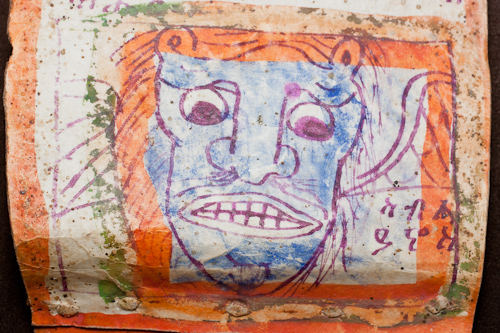
Talismanic Images
Scrolls often contain images of angels, demons, saints, crosses, eyes, geometric patterns, or other symbols of power that are thought to be effectual in warding against or ensnaring demons. The image on the right, of a demon with snakes coiling around its head, faces direcly at the viewer of the scroll, contrary to a rule of Ethiopian art which holds that evil figures are shown in profile. The direct gaze of the demon is supposed to frighten any demon that sees it, by tricking it into thinking that a more powerful demon (or angel, as appropriate to the image) is looking at it. Frightened of the visage, it will depart the afflicted host. See another example here.
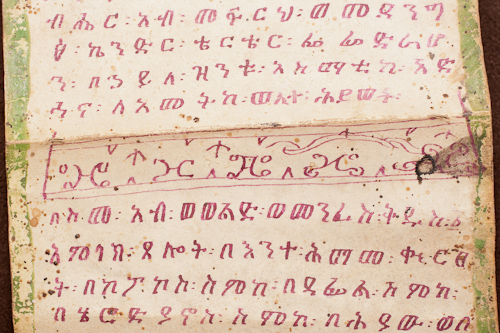
Characteres
Characteres are magical glyphs (generally with circles on the ends of the lines) based upon a Hebrew model. They often appear in magical contexts, as here, in this scroll, where they are placed in the border between two separate prayers.
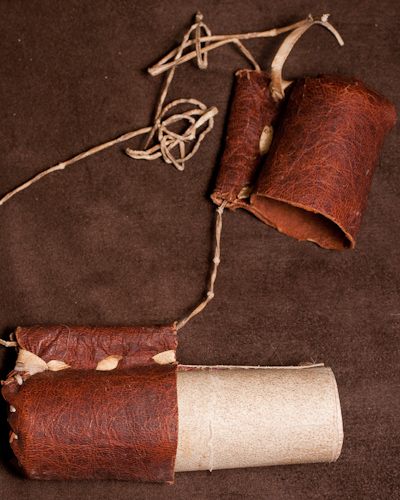
Samples
Scroll in case
Collected in Axum, 2009.
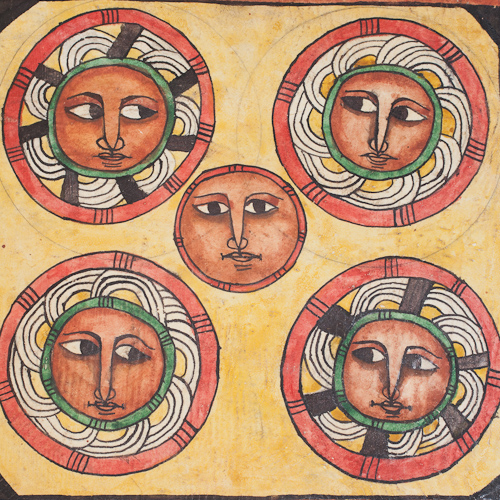
Magical images
Lalibela, 2009.
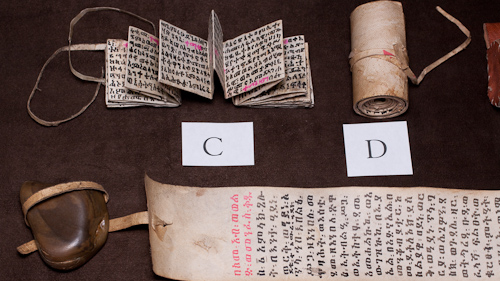

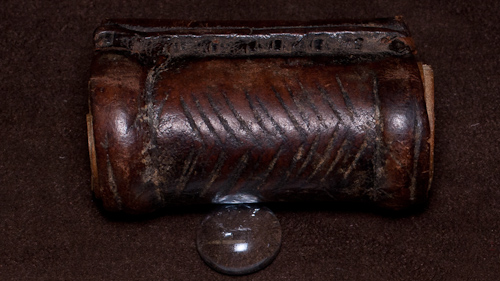
Various scrolls
Ethiopia, 2009.
- C
- Accordion-fold scroll. Bahir Dar, Ethiopia, 2009.
- Intended to be sewn into an amulet.
- D-G
- Scrolls (rolled). Ethiopia, 2009.
- H (third image)
- Scrollcase. Collected in Ethiopia in 2009
- I (bottom scroll, first two images)
- Scroll with names erased. Axum, 2009.
- Scrolls are personalized: when a scroll is re-purposed, the names are erased.

